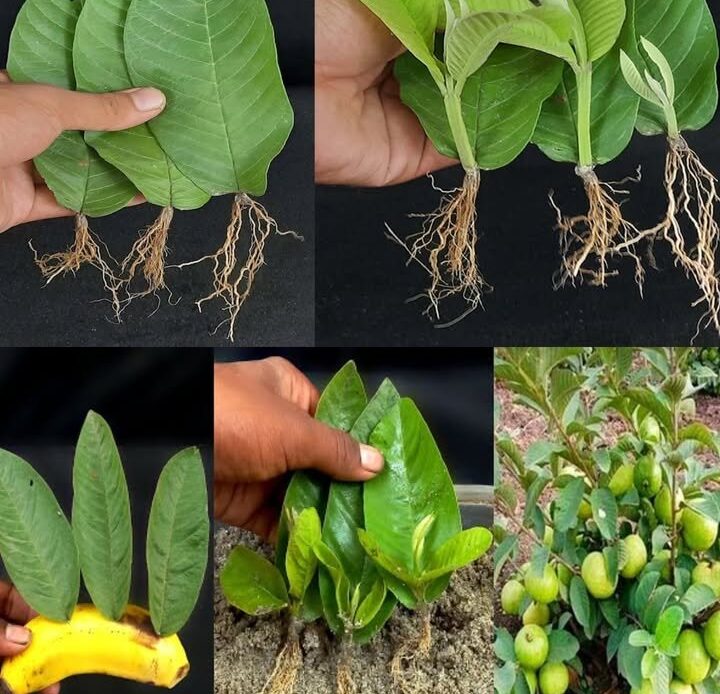Guava trees are a popular addition to home gardens due to their delicious fruit, rich nutritional value, and ease of cultivation. Traditionally, guavas are grown from seeds or cuttings, but many gardeners are curious—can you really grow a guava tree from just its leaves? While growing a tree directly from a single leaf is unlikely, there is a method that involves using guava leaves as part of a propagation process. This technique, known as vegetative propagation, can help you establish a healthy guava tree in your garden without relying on seeds.
In this article, we will explore the step-by-step process of growing guava trees using guava leaves, along with the best practices for ensuring successful propagation and long-term growth.
## **1. Understanding Guava Tree Propagation**
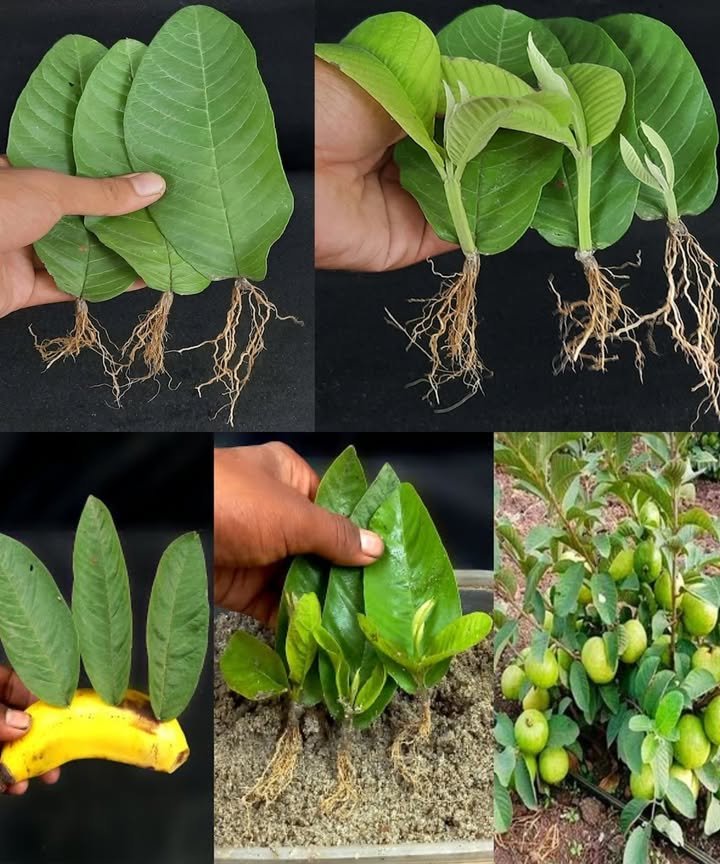
Guava trees (Psidium guajava) can be propagated through several methods:
– **Seeds**: This is the most common method, but it takes longer for trees to mature and bear fruit.
– **Cuttings**: A more reliable method that allows the tree to retain the characteristics of the parent plant.
– **Layering**: A technique in which a branch is encouraged to form roots before being cut and planted separately.
– **Grafting**: Involves attaching a branch from a mature tree to a rootstock to produce strong, disease-resistant plants.
Growing a guava tree from its leaves is a modified form of propagation using leaf cuttings. While a single leaf alone may not develop into a full tree, leaf cuttings with a portion of the stem can encourage root growth and lead to successful propagation.
## **2. Selecting the Right Guava Leaves**
For successful propagation, it is important to select the right leaves from a healthy guava tree. Follow these guidelines:
– **Choose mature, healthy leaves**: Look for vibrant green leaves with a firm texture. Avoid leaves that are yellowing, damaged, or diseased.
– **Select leaves with nodes**: The node is a small joint on the stem where new roots or shoots can develop.
– **Use fresh leaves**: Leaves that have just been picked from a tree have the highest chance of successful propagation.
## **3. Preparing the Leaf Cuttings**
To maximize your chances of successfully growing a guava tree from leaves, you must properly prepare the cuttings:
1. **Use clean pruning shears**: Sterilize your cutting tools with rubbing alcohol or hot water to prevent infections.
2. **Cut a 4 to 6-inch section**: Make sure the cutting includes at least one node, as this is where roots will form.
3. **Remove lower leaves**: If there are multiple leaves on the cutting, remove the lower ones to prevent rotting when planted.
4. **Dip in rooting hormone (optional)**: This step enhances root formation and speeds up the process.
## **4. Rooting the Cuttings**
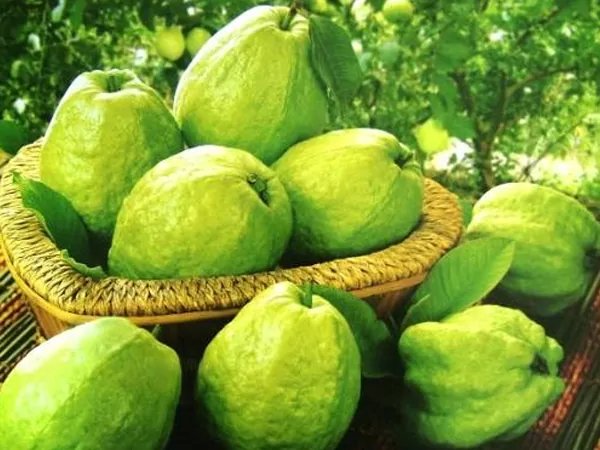
Once the leaf cuttings are prepared, the next step is encouraging root development.
### **Choosing the Right Growing Medium**
A well-draining soil mix is essential for successful rooting. The best options include:
– A mix of **sand and peat moss** for good aeration and moisture retention.
– A combination of **coconut coir and perlite**, which provides excellent drainage.
– High-quality **potting soil with added organic compost** to provide nutrients.
### **Planting the Cuttings**
1. Fill a small container with the chosen soil mixture.
2. Insert the cutting into the soil, ensuring at least one node is buried.
3. Water thoroughly but avoid overwatering to prevent fungal growth.
4. Place the container in a **warm, bright location** with indirect sunlight.
### **Caring for the Cuttings During Rooting**
To ensure successful root development:
– **Keep the soil consistently moist**: Check regularly and water when the top layer begins to dry out.
– **Maintain humidity**: Cover the pot with a plastic bag or use a humidity dome to retain moisture.
– **Monitor for growth**: Within a few weeks, new shoots or roots should start to emerge.
## **5. Transplanting the Rooted Cuttings**
Once the cuttings have developed a strong root system, they are ready to be transplanted into a larger container or directly into the ground.
### **Choosing the Right Location**
Guava trees thrive in **warm, sunny climates** with well-draining soil. When selecting a location for transplanting:
– Pick a spot with **full sunlight**, as guava trees need at least 6 to 8 hours of daily sunlight.
– Ensure the soil is **loose and fertile**, with a pH level between 5.5 and 7.0.
– Avoid areas prone to **waterlogging**, as guava roots can rot in overly wet conditions.
### **Transplanting Steps**
1. Dig a hole **twice the size of the root ball** to allow room for root expansion.
2. Carefully remove the cutting from its container, keeping the root system intact.
3. Place the cutting in the hole and cover it with soil, gently pressing down to eliminate air pockets.
4. Water thoroughly and add a layer of mulch to retain moisture and prevent weed growth.
## **6. Long-Term Care for a Thriving Guava Tree**
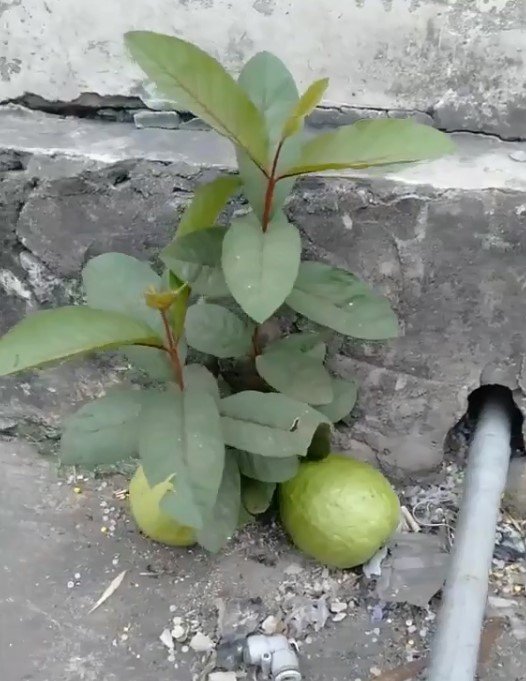
Once transplanted, your guava tree requires ongoing care to ensure healthy growth and fruit production.
### **Watering and Moisture Management**
– Keep the soil consistently moist but **avoid overwatering**. Water deeply once or twice a week, increasing during hot, dry periods.
– Use **mulch** around the base of the tree to retain moisture and regulate soil temperature.
### **Fertilization**
Guava trees benefit from **organic fertilizers** rich in nitrogen, phosphorus, and potassium.
– Apply a balanced fertilizer (such as **10-10-10**) every **two to three months**.
– Use **compost or well-rotted manure** to enhance soil nutrients naturally.
### **Pruning for Healthy Growth**
Regular pruning encourages strong branches, improves air circulation, and enhances fruit production.
– **Remove dead or diseased branches** to prevent infections.
– Trim excess growth to maintain a manageable size and shape.
– Thin out overcrowded branches to allow sunlight penetration.
### **Protection from Pests and Diseases**
Guava trees can be affected by pests such as **fruit flies, aphids, and caterpillars**. To prevent infestations:
– Use **natural insecticides** like neem oil.
– Encourage **beneficial insects** such as ladybugs to control pests naturally.
– Monitor the tree regularly for signs of disease, such as fungal spots or leaf discoloration.
## **7. When to Expect Fruit Production**
Guava trees grown from cuttings typically **bear fruit within 2 to 3 years**, while those grown from seeds can take up to 4 years. To encourage fruiting:
– Ensure the tree receives **plenty of sunlight**.
– Provide **consistent watering** without letting the roots become waterlogged.
– Fertilize regularly with a potassium-rich fertilizer to promote flowering and fruiting.
## **Final Thoughts: Is It Possible to Grow a Guava Tree from Leaves?**
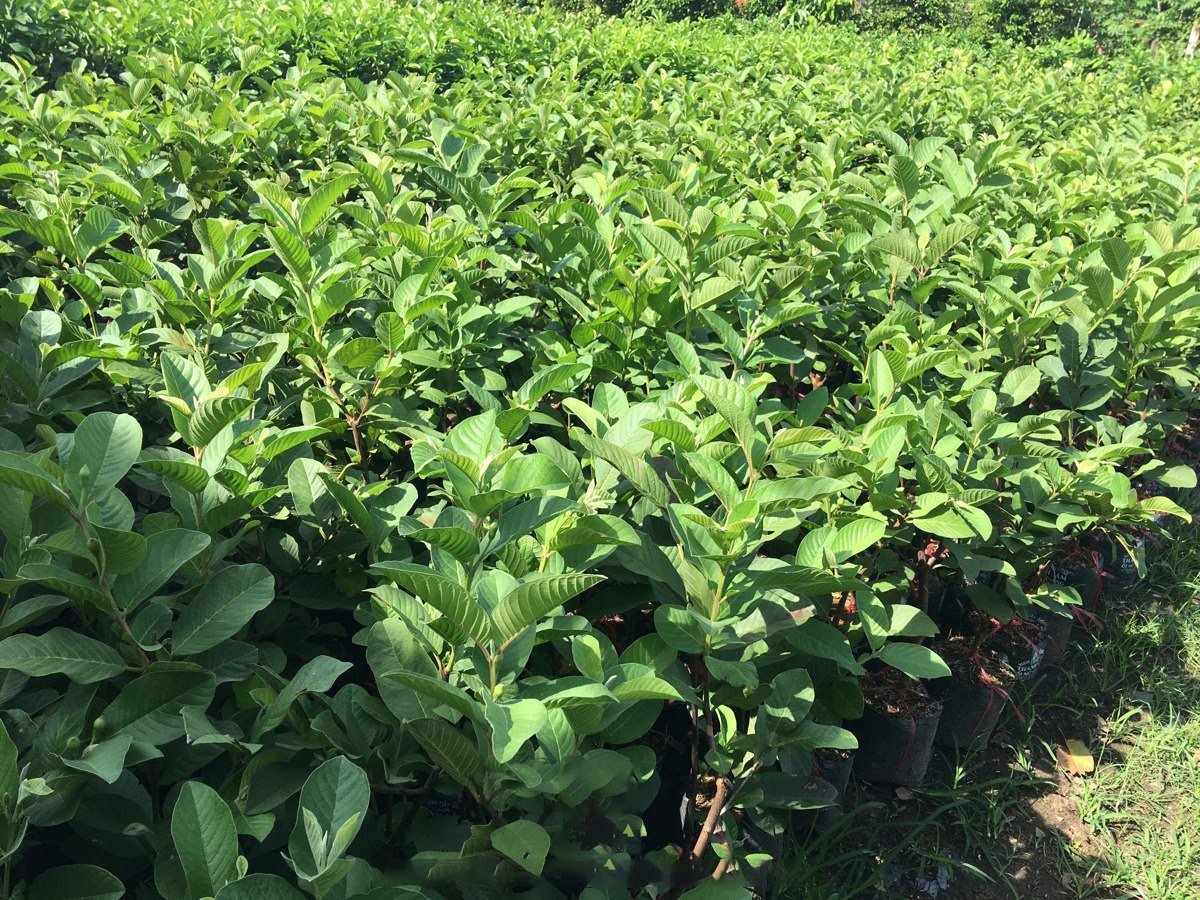
While a single guava leaf alone cannot grow into a tree, using leaves attached to cuttings can successfully produce a thriving guava plant. By following the proper propagation techniques, selecting healthy cuttings, and providing the right care, you can enjoy homegrown guavas in your own backyard.
Whether you’re an experienced gardener or a beginner looking for a new challenge, growing a guava tree from cuttings is a rewarding experience. With patience and the right approach, you’ll soon be harvesting delicious, tropical guavas straight from your own garden.
